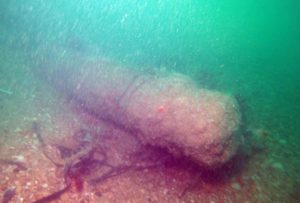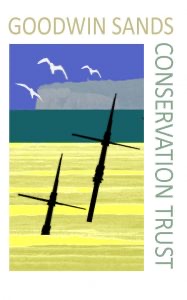Historical background
HMS Restoration was a 70 gun third-rate Man of War built in 1678 by Betts at Harwich and subsequently rebuilt at Chatham in 1702. She weighed 1,055 tons and would have carried a crew of 386. She was one of the ‘Thirty Great Ships’ programme engineered by Samuel Pepys and one of three such ships that sank on the during the Great Storm of 1703.
The Shipwreck
Restoration was wrecked on the Goodwin Sands in November 1703 and is thought to lie under what is known as the North Mound, close to the possible wreck of a sister ship, Mary. Following reports by fishermen of snagging nets, the wreck of Restoration was discovered in 1980 by local divers at a depth of 14m. She was designated a Protected Wreck in 1981. Material visible on the seabed at the time was consistent with her being a large wooden ship of the line but she has not been positively identified. Restoration has been completely buried since 2011 but future sand movement may uncover her at any time.
Archaeological interest

Local divers found the wreck in 1980 following a systematic investigation of net fastenings. The site comprises two mounds, the North and South mounds, located approximately 100m apart. The South Mound that was the original site of investigation is now considered to be that of the Mary, whilst the North Mound, discovered in 1999 is thought to be Restoration.
A ship’s copper kettle that was brought to the surface in 1980 was provisionally linked to Restoration but it is now thought that it came from Northumberland. The South Mound is reported to consist of a large anchor, several cannons and concretion mounds that include a quantity of galley bricks and a survey in 2006 by Wessex Archaeology confirmed that the North mound was made up of similar items.
Multi beam surveys were undertaken in 2002 by ADU followed by further surveys in 2005/2000 by the University of St Andrews as part of the RASSE project. However, none of these surveys have been able to conclusively prove the identity of the two mounds.
